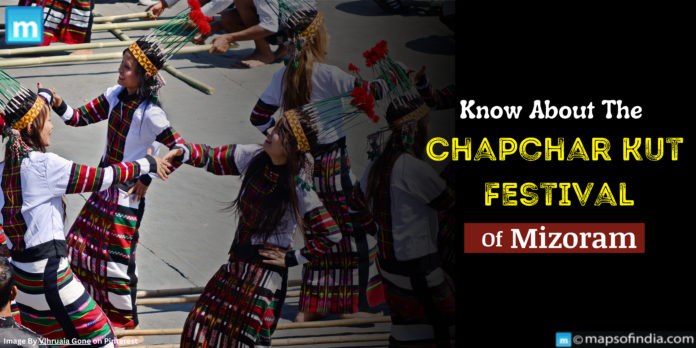Nestled amidst the lush hills of northeast India lies the state of Mizoram, renowned for its rich cultural tapestry. One of the most vibrant threads woven into this fabric is the Chapchar Kut Festival, a celebration that marks the end of the arduous jhum cycle and welcomes the spring season.
Origins and History
Estimated to have originated between 1450 and 1700 AD in the village of Suaipui, Chapchar Kut is believed to have sprung from a moment of disappointment. When hunters returned empty-handed, the village chief, to uplift spirits, organized an impromptu feast with rice, beer and meat. This gesture of joy and community fostered the tradition that continues to be celebrated today. Initially marked by revelry that included heavy consumption of rice beer, the festival has evolved, adapting to modern sensibilities while retaining its essence.
The Significance of Timing
Held annually in the latter part of February or early March, Chapchar Kut coincides with a crucial stage in the jhum cycle, a traditional form of slash-and-burn agriculture practiced by the Mizo people. After clearing the land and burning the remnant vegetation, the felled trees and bamboo (known as “chap char”) are left to dry, marking a period of respite for the farmers. This downtime provides the perfect opportunity for the community to come together and celebrate the fruits of their labor and the promise of a bountiful harvest.
Festive Delights: A Feast for the Senses
The heart of Chapchar Kut lies in the vibrant festivities that unfold over several days. The Cheraw, the most iconic element of the festival, is a captivating group dance performed by both men and women. Dressed in their finest traditional attire, participants move in rhythmic unison, mirroring the swaying of bamboo stalks. The rhythmic beats of drums and the melodious strains of flutes provide the perfect accompaniment to this energetic display of cultural pride.
Beyond the Cheraw, the festival is a kaleidoscope of other cultural activities. Traditional dances like the Chai and the Fawngai showcase the diverse styles and stories of the Mizo people. Folk songs, known as Hlacheira, fill the air with their rich melodies, often accompanied by the soulful tones of the Taru, a single-stringed instrument.
A Showcase of Culture and Community
Chapchar Kut is not just a celebration of harvest; it’s a reaffirmation of communal bonds and cultural heritage. The festival grounds transform into vibrant hubs, with stalls showcasing local handicrafts and art. Visitors can marvel at the intricate embroidery work on traditional shawls and clothing or be mesmerized by the skillful weaving techniques displayed by artisans. Food stalls tantalize taste buds with an array of Mizo delicacies, including bambooshoot stew and pumpkin leaves stew, prepared using fresh, locally sourced ingredients.




